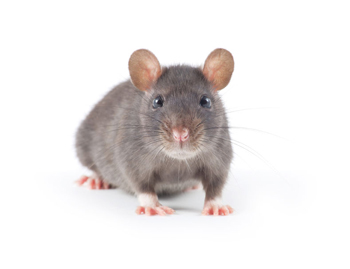When it comes to household pests, few are as sneaky—and potentially damaging—as rodents. They rarely make a grand entrance, preferring instead to creep in quietly, settle behind your walls, and go about their destructive business without you even noticing. However, it doesn’t imply they’re not there just because you can’t see them. A rodent infestation can be well underway before any obvious signs show up. That’s why it’s so important to recognize the subtle clues early on—before mice and rats cause serious health and safety issues in your home.
These are the most typical warning indicators that could indicate a hidden rodent problem in your home.

1. Droppings and Urine Stains
One of the first red flags is the presence of droppings. Typically, rodent feces are pellet-shaped, tiny, and black. They may be found in cabinets, drawers, baseboards, or close to food sources. While they’re small, they’re hard to miss once you know what to look for.
In addition to droppings, rodents often leave behind urine stains. These may appear as greasy smudges or dark trails along walls and floors. The smell of urine is also a strong indicator, especially if it’s musky or sour.
2. Gnaw Marks and Chewed Items
Because their teeth never stop growing, rodents must continually chew in order to control them. This results in chewed furniture, baseboards, plastic containers, cardboard boxes, and even electrical wires.
If you notice frayed wiring, shredded paper, or holes in food packaging, it could be the work of rodents trying to gain access to a food source or create nesting material. Beyond property damage, gnawing on wires also increases the risk of electrical fires—a serious hazard that makes a rodent infestation even more dangerous.
3. Strange Sounds and Unusual Pet Behavior
Scratching, squeaking, and scurrying sounds coming from the attic, crawl spaces, or inside walls—especially at night—are classic signs of mice in walls. You are more likely to hear rodents after sunset since they are nocturnal.
Dogs and cats, for example, often detect rodent activity before people do. Your cat may be responding to anything moving inside if they are looking at a certain cupboard or corner of the ceiling or if your dog is barking at the wall.
4. Nests and Nesting Materials
Rodents build nests from soft, shredded materials such as paper, fabric, insulation, or dried plants. Dark, peaceful areas like the attic, cabinets, beneath the sink, or behind appliances are often where these nests are concealed.
If you stumble upon a pile of shredded paper or fabric tucked away in an unusual spot, there’s a good chance it’s being used as a nest. Finding a nest confirms that rodents are not just passing through—they’re settling in.
5. Grease Marks, Tracks, and Smudges
Rodents often use the same routes along baseboards and walls as they move through your house. Over time, their oily fur can leave behind noticeable grease marks or smudges. You may also see tail drag traces or footsteps in dusty places.
Try applying a thin coating of flour or baby powder next to suspected entrance locations, then look for any footprints the following day to verify this.
6. Foul Odors and Health Symptoms
A growing rodent infestation often brings with it a noticeable odor. This can come from accumulated droppings, urine, or even the unfortunate presence of dead rodents hidden behind walls.
You may also experience allergic reactions or breathing problems due to rodent dander, waste, and the bacteria they spread. Rodents may be to blame if you or any family members have started to sneeze more often or have irritated eyes.
7. Visible Rodents or Daytime Sightings
Seeing a rodent in the middle of the day is never a good sign. Mice and rats typically avoid daylight, so daytime activity often indicates a large population that’s competing for food and space.
If you’ve actually seen a rodent, it’s time to act quickly. Where there’s one, there are likely many more hiding just out of sight—especially if you’re already hearing noises or finding droppings in multiple areas.
The Longer You Ignore It, the Worse the Rodent Problem Gets
A hidden rodent problem won’t stay hidden forever. Rodents may contaminate your food, damage your home, and pose major health threats if they are not controlled. The earlier you spot the signs, the easier it is to stop the infestation before it grows out of control.
If you’ve noticed any of the symptoms above—whether it’s scratching in the walls, chewed wires, or a suspicious odor—it’s time to investigate further. Expert pest management may assist in identifying and swiftly removing the problem’s cause.
In the meantime, take steps to deter rodents by sealing entry points, keeping food sealed, decluttering storage areas, and cleaning up crumbs and spills. When compared to dealing with a full-blown rodent infestation, prevention is always simpler (and less expensive).
Pest Assassin will assist you in keeping rats out of your house. Our trained professionals will find the source, eliminate the threat, and keep your home protected. Call Pest Assassin today for fast, effective rodent control you can count on. Your home deserves the best defense—act now!

